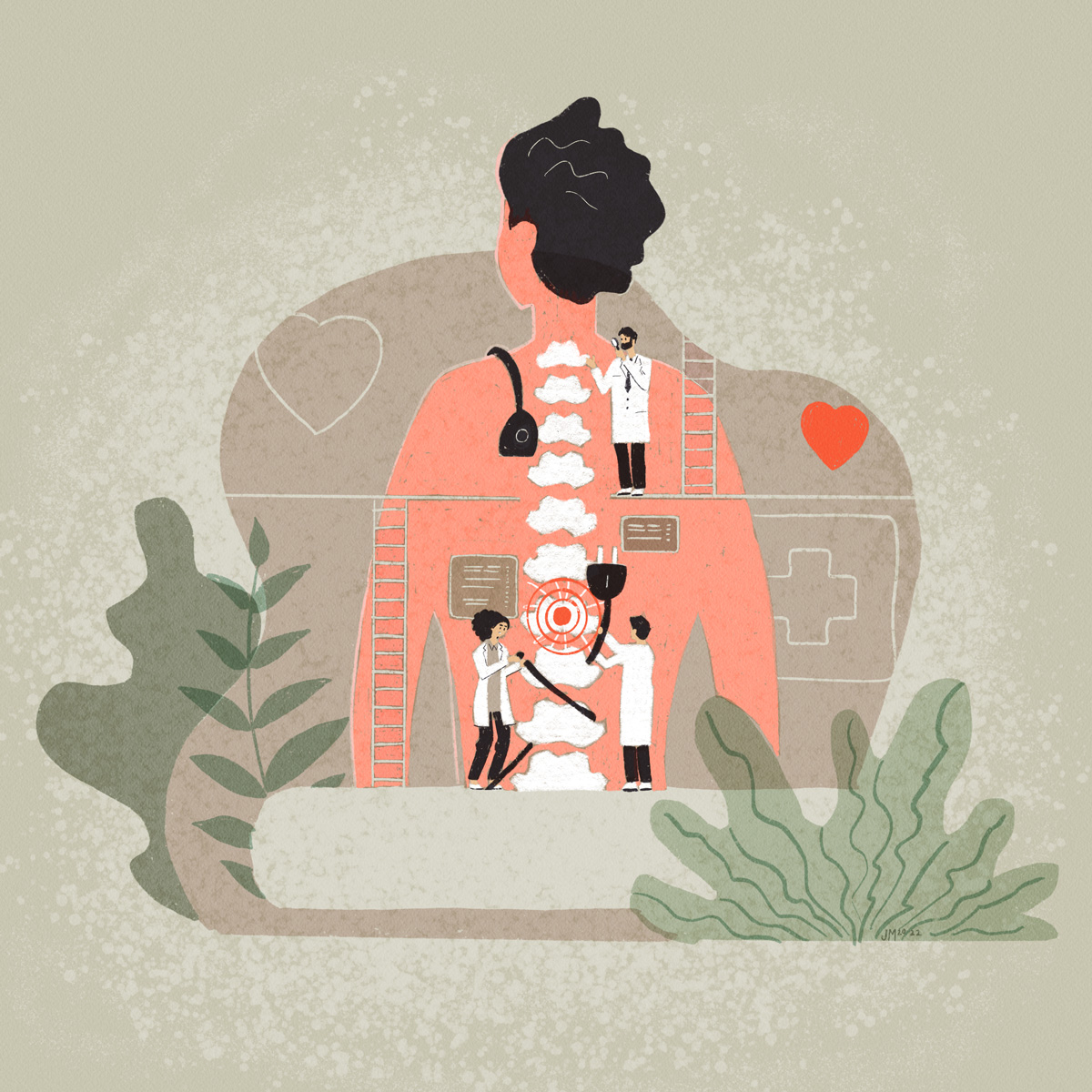More than 50 million Americans suffer from chronic pain, an often incurable problem that costs billions and ruins lives. New research shows that pain reprocessing therapy may provide long-lasting, potent relief. The problem may not be in your back, but in your brain.

Back pain is the most common type of chronic pain. “Chronic” is usually defined as pain lasting for 3 months or longer. If you suffer from it, you may struggle to relax, sleep, work, or just enjoy your life. Standard treatments like physical therapy or pain medication (specifically opiates, which carry significant risks and side effects) may not be effective.
Attempting to treat the pain medically may be particularly ineffective if you suffer from “primary pain” – pain that has no apparent bodily source. Around 85% of people with chronic back pain have no identifiable physical damage. Their pain is real, but may be caused by pain receptors that continue to fire even after an injury has healed.
What does your brain have to do with chronic back pain?
Pain is your brain’s alarm mechanism for alerting you to danger. If your brain thinks something should hurt, it activates certain neural pathways to create the experience of pain. In cases of real danger, like when you lift something heavy and tear a ligament, pain warns you to stop what you’re doing to prevent further harm. However, when you experience a longer-term injury, your brain may continue to sense danger long after the injury has healed. Your pain receptors may continue to fire, simply because you expect to hurt.
In addition, emotional distress and negative thoughts can increase your likelihood of experiencing false pain alarms. This is because the part of your brain involved in emotional responses (the limbic system) is also involved with pain generation.
In these situations, you actually might need to convince your brain that there is no danger. Essentially, you retrain your brain to stop associating specific movements and sensations with danger, and this neutralizes the systems that reinforce your pain.
Psychological treatments, such as pain reprocessing therapy, can help you retrain your brain to extinguish or reduce pain that has no physical source.
What is pain reprocessing therapy?
Pain Reprocessing Therapy (PRT) is a new treatment approach in which you change the way you think about and react to pain to extinguish false pain signals. You teach yourself that your pain isn’t a sign of danger (once injury and structural damage have been ruled out) so that you can begin interpreting those sensations as harmless.
Pain reprocessing therapy involves five steps that help you relearn how you think about pain. The technique, called somatic tracking, looks like this:
- Learn about the pain/fear cycle. Where does pain trigger fear? Does that cause more pain? Does that pain then trigger more fear?
- Understand that the pain you’re experiencing stems from psychological processes.
- Engage in movements that often trigger pain to change your perception and break the pain/fear cycle. For example, if you usually feel pain when you sit down, you might be asked to sit down slowly, pay attention to the specific sensations you experience, and try to view those sensations as safe.
- Respond to pain threats with mindfulness.
- Engage in activities that make you feel good in order to help you change your perception of pain and reduce negative emotions that may exacerbate your pain.
Ultimately, when you understand that your brain sometimes creates the sensation of pain simply because it expects to feel pain, you can begin to reverse the process. When you know that your pain isn’t caused by physical damage, but rather by fear of hurting, you begin to perceive that pain differently. This understanding gives you more control over pain and your response to it.
Does pain reprocessing therapy work?
The first clinical trial of pain reprocessing therapy included 151 participants with mild to moderate back pain that had no apparent physical cause. Two-thirds of the participants treated with pain reprocessing therapy for four works were pain-free after the study, and 98% experienced at least some improvement. In contrast, only 20% of placebo participants and 10% of usual care participants reported similar improvements.
In addition to differences in self-reported pain, fMRI scans revealed that, compared with the other two groups, people who received PRT showed significant reductions in brain activity in regions related to pain processing.
While more research is needed to better understand the power and utility of pain reprocessing therapy, current research shows enough promise to keep providers interested in exploring this innovative method for managing pain.
Steps You Can Take
If you suffer from chronic pain, try to stay hopeful about managing it. Engage in healthy activities that bring you pleasure and keep you connected with other people. Get active with yoga, a short walk, or just a long session of stretching. Get out and about with friends and family. Endorphins and pleasant distractions can go a long way toward relieving your pain.
If you or someone you love might benefit from psychological treatment for chronic pain, we’re here to help. Contact Athena Care for mental health care in Tennessee. One of our care coordinators will help you get the help you need.

Rachel Swan, MS
Editor
Rachel has a Masters of Science in Clinical Psychology from Vanderbilt University, where she spent 16 years as a Research Analyst in the Psychology and Human Development Department.


